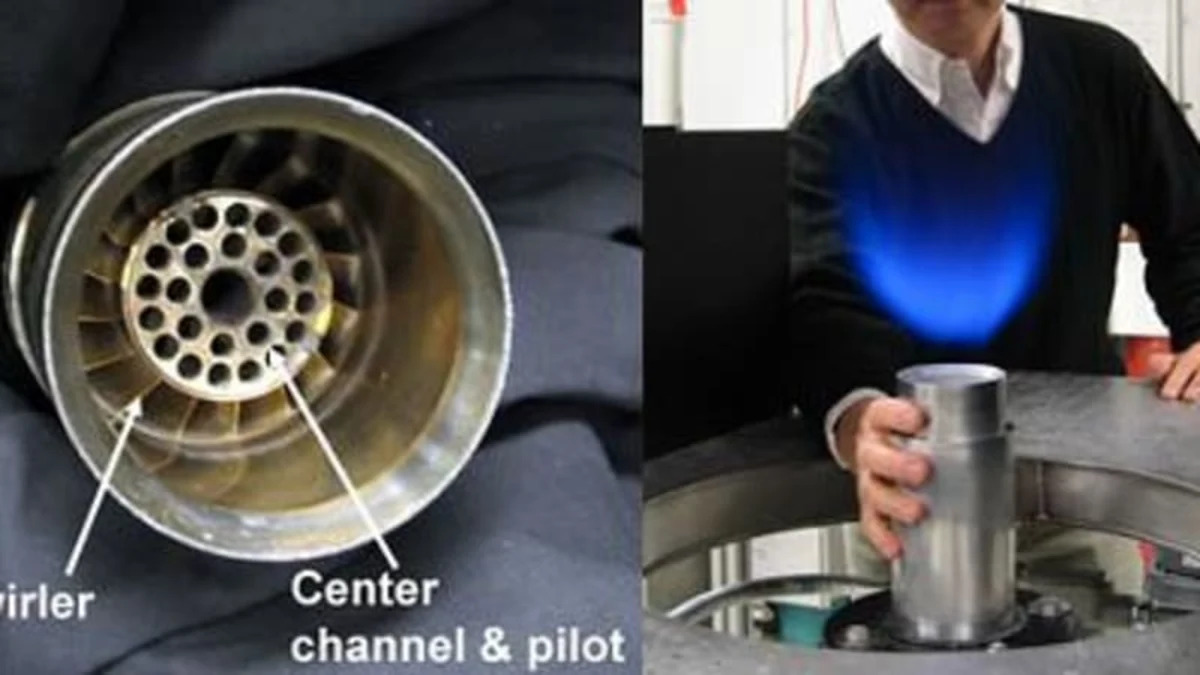For the foreseeable future, we will definitely be burning fuel sources to generate power. In some cases, these will be fossil fuels and in others they may be biofuels; even hydrogen is a potential fuel. Whatever fuel is used, there will be emissions. Sure, some biofuels might be carbon-neutral, but there are still emissions like nitrogen oxides that will be emitted from the spent gases. In the case of nitrogen oxides, the amount emitted is usually in line with the temperature at which the fuel is burned; the lower the temperature, the less nitrogen oxide. Low-swirl combustion is a new method developed by Robert Cheng and David Littlejohn of Berkeley Lab's Environmental Energy Technologies Division. Here we have a technology which has matured to the point of being commercially viable. Solar Turbines Inc. of San Diego has released a new gas turbine called the Taurus 70 which can produce seven megawatts of electricity as a power generator.
The low-swirl technology can be used with any gas and any burner or combustor. I imagine that this technology could possibly be used for jet engines, as they use a combustor. The technology works by giving the fuel mixture a slight swirl. This has the effect of lowering the temperature of the flame and holds the flame away from the burner, which further lowers the temperature and increases efficiency. This technology could also see use for the burning of landfill gases or other biomass.
[Source: The Energy Blog]


Sign in to post
Please sign in to leave a comment.
Continue